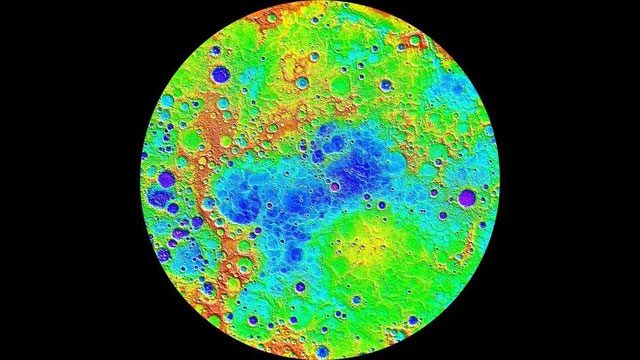Before its demise, NASA’s MESSENGER spacecraft managed to identify an astonishing “habitable zone” on the smallest planet in the Solar System.
This “habitable zone” is located within the craters near the North Pole of Mercury, according to a study recently published in the scientific journal The Planetary Science Journal.
The research, led by planetary scientist Alexis Rodriguez from the Planetary Science Institute, a non-profit organization based in Arizona, USA, analyzed data from NASA’s MESSENGER spacecraft.

Topographic map of Mercury in the area believed to contain “subsurface glaciers” holding life – (Image: NASA).
The MESSENGER spacecraft was an orbiter that operated from 2004 to 2015 around Mercury. Although the mission has concluded, its dataset of over a decade is still being actively studied by scientists worldwide.
Within this dataset, the “habitable zone” has been revealed through data regarding two craters: Raditladi and Eminescu.
Located near the North Pole of Mercury, these craters contain salt deposits that trap volatile compounds deep beneath the planet’s surface, including water, carbon dioxide, and nitrogen.
Recent asteroid impacts have inadvertently exposed the materials trapped beneath the surface.
These findings suggest a type of glacier that is surprising, as it was previously thought that Mercury, being so close to the Sun, could not support such structures.
However, due to their subsurface location, these salt deposits have preserved volatile materials for over 1 billion years, according to new estimates.
According to Live Science, while Mercury’s salty sediments are not like typical icebergs or Arctic glaciers, similar saline environments do exist on Earth.
Extremophiles have been found in such environments, even in more lethal conditions like the waterless areas of Chile’s Atacama Desert, in boiling volcanic waters, and deep beneath dark ice…
Thus, these structures could very well harbor similar extremophilic microorganisms.
The volatile compounds found in these subsurface deposits may originate from the collapse of the planet’s primordial atmosphere before it became the lifeless globe it is today.
Additionally, there could be contributions from high-salinity steam that leaked from Mercury’s younger volcanic activity, which then evaporated, leaving behind salt deposits.
The authors of the study emphasize the need for further research to truly uncover what lies beneath Mercury’s surface, a task that later, more advanced missions beyond MESSENGER are expected to illuminate.


















































